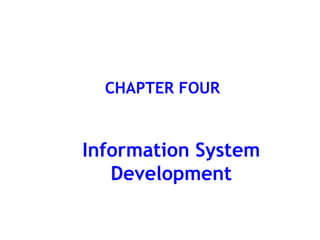The document discusses the information system development life cycle (SDLC) which includes various phases from problem definition to maintenance and review. It describes each phase in detail including system analysis, design, development, implementation and post-implementation maintenance. It also provides an overview of database management systems (DBMS), their basic concepts and why DBMS are used to manage organizational data and address issues with traditional file-based systems.








































